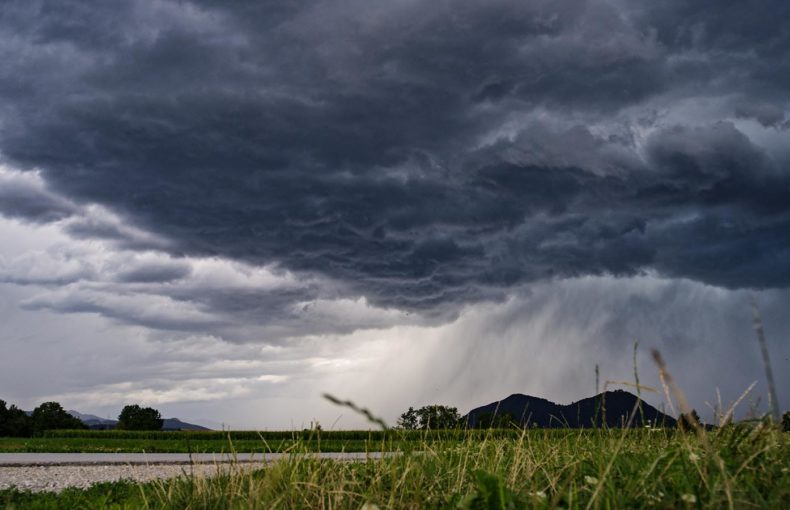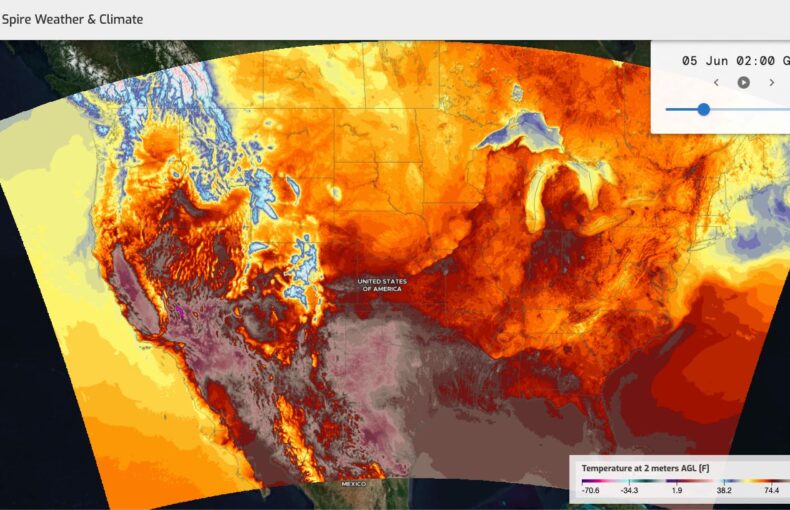Will your business be ready for La Niña’s impact this winter?
As meteorological winter approaches on December 1, businesses have just weeks to brace for the season’s unique challenges.
Now is the ideal time to develop strategies that will keep operations resilient against winter weather conditions that lie ahead.
US winter forecast highlights
A weak La Niña is expected to develop between November and January, and it will play a role in shaping winter weather conditions across the United States. NOAA has given the odds of La Niña taking shape at 75%.
La Niña impacts jet stream patterns and thus influences storm tracks across the US, affecting temperature and precipitation trends.
Seasonal precipitation outlook
Valid: Devember, January, February 2024-25
Issued October 17, 2024
Credit: NOAA
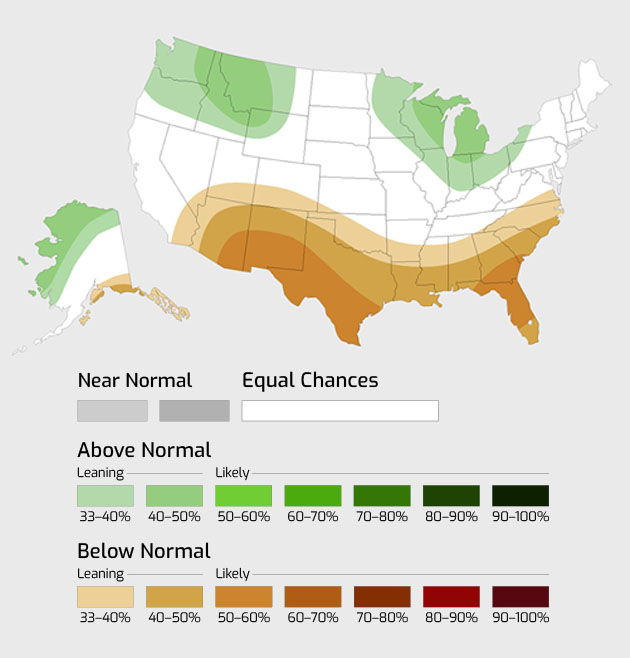
The greatest chances for above-average precipitation will be across the Great Lakes region of the US, according to NOAA. The map, based on the NOAA seasonal outlook, shows projected precipitation departures from normal for December through January.
This winter is expected to bring above-average precipitation from the Northwest to the Great Lakes, as La Niña is predicted to drive a northern storm track, favoring more active winter storms in the northern US. Below-normal temperatures are predicted from the Northwest to the northern Plains.
In contrast, drier-than-average conditions are forecast for the southern US, from the Southwest to the Gulf Coast, which may worsen existing droughts, especially in the central and southern Plains. Warmer-than-average temperatures are also likely in the southern US and along the East Coast.
Seasonal temperature outlook
Valid: Devember, January, February 2024-25
Issued October 17, 2024
Credit: NOAA
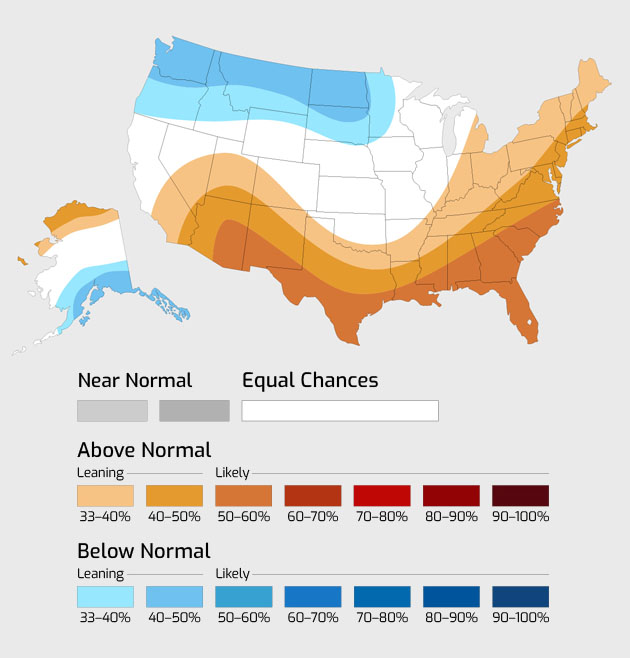
The greatest chances for cooler-than-average conditions will be in the Pacific Northwest of the US, according to NOAA. The map, based on the NOAA seasonal outlook, shows projected temperature departures from normal for December through January.
Businesses across utilities, logistics, and insurance sectors can proactively plan for winter conditions to manage risks and capitalize on potential opportunities, while helping traders anticipate market trends and energy supply dynamics.
Business preparedness for winter weather
1. Winter preparedness for utilities
With La Niña driving wetter conditions across the northern US, utilities should focus on strengthening infrastructure and ensuring efficient power distribution during potential storms.
Storm readiness: Secure critical infrastructure to handle increased precipitation and lower temperatures in northern regions.
Deploy smart sensors for real-time monitoring: Using IoT sensors to monitor load fluctuations, line sag, and ice accretion in real-time helps identify potential weaknesses, allowing operators to act before small issues lead to failures.
Trim trees proactively: Snow-laden branches and ice can damage power lines. Conducting extra tree trimming in the fall minimizes the risk of downed lines, especially in areas where heavy snow or ice is expected.
Monitor snow loads on solar panels: Snow buildup on solar panels not only reduces power output but can also lead to structural damage. Having a strategy to clear or monitor snow on panels helps maintain optimal power generation from solar installations.
Drought management: Prepare for increased power demand in drought-prone southern areas where temperatures are expected to be warmer.
Customer communication: Develop clear communication plans to notify customers of potential weather impacts and power disruptions.
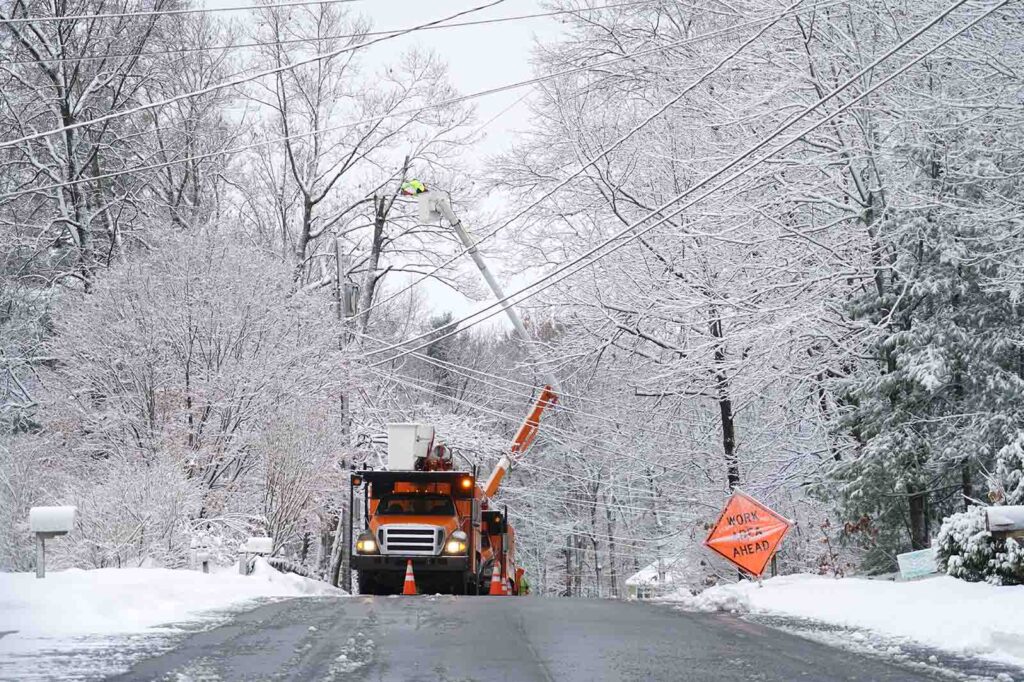
2. Logistics: Navigating winter storms and supply chain disruptions
For logistics providers, the combination of wetter, stormier conditions in the north and drier, warmer weather in the south means adapting quickly to shifting routes and potential delays.
Optimize route planning: Monitor winter storm paths and adjust routes to minimize disruptions in northern areas expecting increased precipitation. Spire leverages proprietary data to help organizations mitigate risk for fixed and moving assets worldwide. With DeepVision™, our premier weather risk solution, decision-makers gain 24/7 access to expert meteorologists, ensuring timely and informed responses to weather-related challenges.
Stockpile essentials: Ensure warehouses in affected areas have necessary supplies, especially where drought impacts could affect inventory levels.
Enhance fleet preparedness: Equip vehicles with winter safety kits and educate drivers on handling adverse weather conditions.
3. Energy traders: Strategic positioning for weather-driven volatility
Energy traders should brace for winter’s potential impact on heating demands, particularly with regional shifts like cooler conditions in the north and warmer-than-average temperatures in the south.
Anticipate price shifts: Watch for demand spikes in heating oil and natural gas in cooler northern areas, where wetter conditions might lead to increased energy needs.
Monitor drought impacts: Drought-stricken regions in the south could see changes in energy demand, affecting power generation and consumption patterns.
Manage market volatility: Prepare for price fluctuations driven by temperature swings and demand shifts.
4. Grid management for utilities facing La Niña’s effects
Utilities serving the Pacific Northwest to the Great Lakes regions should prepare for wetter conditions and impacts from winter storms, which could affect power reliability and demand.
Increase storage capacities: Store additional fuel and energy reserves for higher power demand, particularly in regions prone to colder temperatures.
Invest in snow removal: Anticipate the need for frequent snow and ice removal, especially as northern storm tracks are predicted.
Ensure substations are winterized: Protecting critical substations against ice and snow, including insulating pipes, securing ventilation systems, and installing heating elements, can prevent disruptions from equipment freezing.
Pre-position repair crews strategically: When severe winter weather is forecast, position crews in high-risk areas ahead of time to speed up response and reduce the duration of outages.
Emergency response planning: Prepare for rapid response to outages or grid disruptions due to heavy precipitation and storm activity.
5. Fleet operators: Winter weather adaptation
Fleet and transportation companies should prepare for logistical challenges posed by La Niña’s winter storm paths and potential for increased snow and ice in northern regions.
Safety first: Provide snow chains, winter tires, and safety kits for drivers operating in the northern US.
Flexible scheduling: Implement contingency plans for potential delays caused by heavy precipitation.
Route diversification: Develop backup routes to avoid storm-impacted regions, minimizing delays and ensuring timely deliveries.
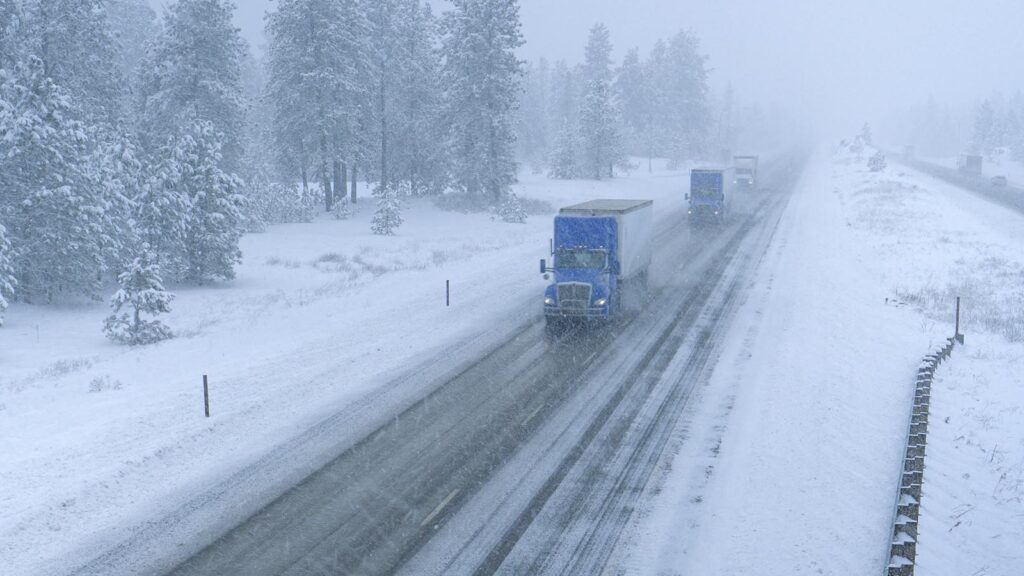
6. Southern utilities: Managing demand in warm, dry conditions
Utilities in the southern US, where warmer and drier conditions are anticipated, should focus on strategies to manage energy demand fluctuations. In general, lower heating demand is likely given the trend toward above-normal temperatures in the southern US.
Monitor demand surges: Prepare for potential surges in power usage as warmer-than-average temperatures are likely to influence heating and cooling needs.
Promote energy efficiency: Encourage conservation efforts to control peak demand.
Collaborate with local authorities: Coordinate with local governments to optimize resource management.
7. Drought resilience strategies for businesses
Drought persistence will be a significant issue in the central and southern Plains, affecting resource availability for various industries. Additionally, businesses in the energy and utility sectors should be prepared for drought-driven increases in energy use for irrigation systems.
Drought impact planning: Prepare for operational impacts from reduced water resources and potential energy shortages.
Local supplier relationships: Partner with regional suppliers to address possible water and resource constraints.
Conservation initiatives: Develop and promote conservation strategies among staff and customers to manage resource use effectively.
8. Trading and hedging for winter volatility
Energy traders should be aware of possible price shifts due to winter weather’s impact on supply and demand dynamics across the nation.
Hedge against price spikes: Position contracts to account for potential energy demand increases in colder northern areas.
Diversify energy sources: Consider alternative sources or imports to mitigate supply issues from drought-impacted regions.
Real-time weather monitoring: Use advanced weather forecasts, such as the Spire High-Resolution Forecast, to stay updated on weather patterns that could influence energy markets. Our precise, space-powered model outputs hourly forecasts at 3 km resolution, extending out six days, providing critical short and medium-range forecasts with advanced, space-powered accuracy.
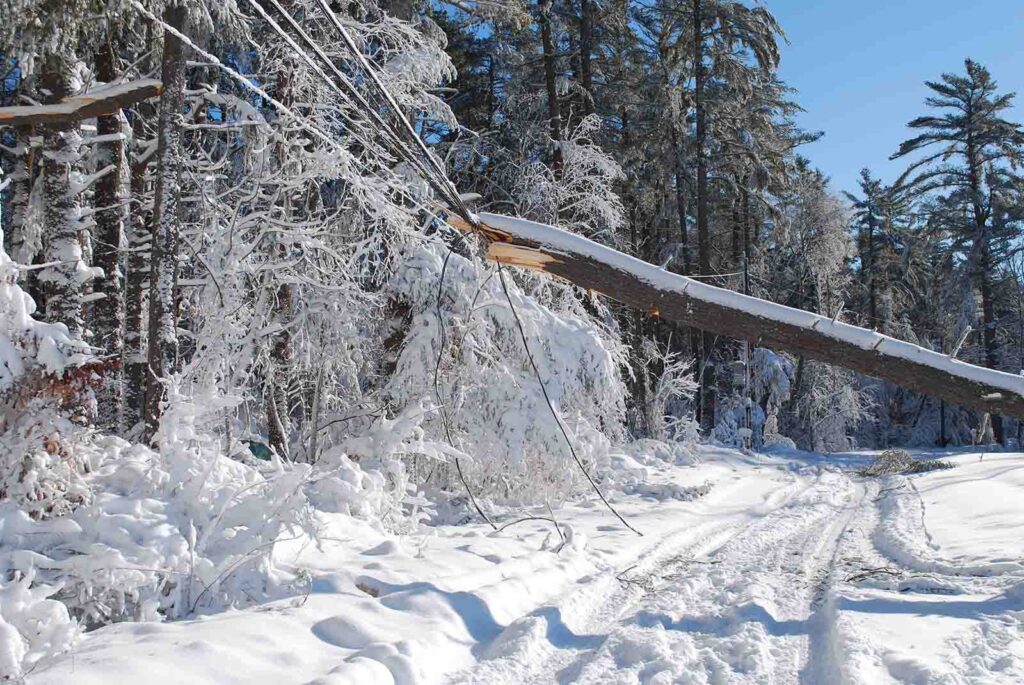
9. Insurance claims readiness
Insurers should brace for an uptick in property claims related to severe winter storms, especially in the northern US.
Streamline claims processing: Prepare ahead to handle increased claim volume from winter storms, especially where an active storm path will deliver above-normal precipitation from the Northwest to the Great Lakes.
10. Wildfire risk prevention
Insurance and utility companies in the southern US should prepare for heightened fire risks due to drier-than-normal conditions.
Proactive planning: Encourage policyholders in dry southern areas to adopt fire-prevention strategies.
Risk management: Use high-resolution forecasts to monitor and manage wildfire risks effectively.
Conclusion
With La Niña predicted to influence winter patterns, businesses across industries should prepare for a season of contrasts, from cooler, wetter conditions in the north to persistent and worsening drought in the south. Spire Weather & Climate offers advanced weather solutions, such as DeepVision™ and DeepInsights™, powered by proprietary, space-derived weather data. Our cutting-edge technology provides businesses critical short- and medium-range forecasts, while our upcoming AI subseasonal model will deliver insights into the long-range forecast.
By leveraging these tools, businesses can proactively manage winter risks, streamline operations, and seize opportunities.
 Written by
Written by

